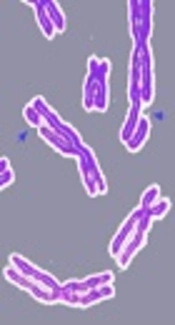Dear Editor,
Inhibitors of the DNA damage response (DDR) offer an exciting opportunity to identify targeted cancer therapies (1). In addition to enhancing the effectiveness of DNA-damaging chemotherapies and ionizing radiation (IR) treatment, DDR inhibitors have potentials for single-agent activity in specific tumor genetic backgrounds based on the principle of synthetic lethality (2). This was first represented by inhibitors of poly (ADPribose) polymerase (PARP) in BRCA mutated gynecological related cancers (3, 4).
Synthetic lethality is a relatively pervasive characteristic of cancers that harbors genomic instability. In some cases, tumor cell defects in the repair of damaged DNA contribute to this phenotype. Defects that drive genomic instability also impart vulnerabilities that may make tumor cells sensitive to particular DNA synthesis targeting drugs (5). The idea of exploiting synthetic lethality to target cancer was first highlighted by Hartwell and colleagues (6) and Kaelin (2). The synthetic lethal principle provided a conceptual basis for targeting tumors with a known tumor suppressor defect: If genes and proteins could be identified that were synthetically lethal with specific tumor suppressor gene defects, then in principle, targets could be identified that would likely elicit tumor-cell-specific death without deleterious effects on normal cells, which do not harbor tumor suppressor gene loss.
Hypothesis-driven studies revealed that loss of function of BRCA1 or BRCA2 results in an exquisite sensitivity to chemical inhibition of the poly(ADP-ribose) polymerase, particularly (PARP)-1 (2, 7). The logic for this synthetic lethal interactions stems from the fact that BRCA1 and BRCA2 are tumor suppressor genes that are involved in homologous recombination (HR) DNA repair of DNA double-strand breaks (DSBs) (8). These proteins alongside Phosphatase and tensin homolog (PTEN) encoded by PTEN gene are among the main accessory proteins that control DNA repair and sensitivity to genotoxic stress. PTEN is frequently found to be mutated, deleted, or epigenetically silenced. Recent findings have demonstrated that PTEN also plays a critical role in DNA damage repair and DNA damage response (9). These DSBs, which are repaired by HR in BRCA positive cells, are presumed to accumulate in PTEN, BRCA1- or BRCA2- deficient cells, leading to subsequent cell death. Increased sensitivity to PARP inhibition has also been observed in cells with other genetic lesions that affect HR, including phosphatase and tensin homolog (PTEN) loss (10), ataxia telangiectasia mutated (ATM) deficiency (11, 12), and Aurora A overexpression (13).
Among the DNA repair mechanisms, HR is the mainly error free, whereas the other mechanisms of DSB repairs (i.e., nonhomologous end joining (NHEJ) and single-strand annealing (SSA)) are almost error-prone and may endanger genomic stability. PARP1, a DNA repair enzyme, is responsible for the base excision repair of DNA single-strand breaks (14). PARP1 is an abundant nuclear enzyme that synthesizes poly (ADP-ribose) polymer when activated by DNA nicks or breaks. Activation of PARP1 has important effects on a variety of cellular processes, including base excision repair (BER), double-strand breaks (DSB) and other repair mechanisms (15). The role of PARP1 in the DNA damage response gained many interests in the development of PARP inhibitors as potential chemosensitizers for the treatment of cancers (16).
The mechanism for the single-agent activity of PARP inhibitors has been linked to the role of this crucial enzyme in the repair of DNA single-strand (SSBs) and DSBs (17-19). The majority of DSBs in cancer cells DNA would be repaired by the homologous recombination repair (HRR) pathway (20), in which BRCA1 and BRCA2 genes play crucial roles (21). Tumors with HRR-defective backgrounds (e.g. because of BRCA or PTEN deficiency) will benefit error-prone DNA repair pathways (22), leading to extensive genomic instability and succeeding cell death in tumor cells. Studies also showed PARP1 is implicated in the modulation of some nuclear processes, including NHEJ (23). In addition, there is a hypothesis that the simultaneous loss of HR and PARP1 could result in NHEJ pathway blockage. Consequently, PARP inhibition in HR-deficient cells might increase the genomic instability resulting from this error-prone pathway.
A number of PARP inhibitors have been reported to have synthetic lethal activity in BRCA-deficient patients. These include BMN 673 (Biomarin) (24), niraparib (25), rucaparib (26), veliparib (27), and AZD2461 (28). In addition, the efficacy of some PARP inhibitors has been identified in non-BRCA-mutation-linked cancers, including sporadic castration-resistant prostate cancer and non-small-cell lung cancer. Given that up to 80% of endometrial cancers and 50% of prostate cancers lack PTEN expression, we suggest that PARP inhibitors may be therapeutically useful for a subset of other cancers.
